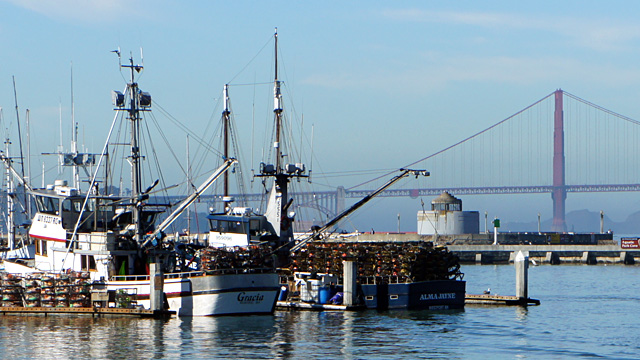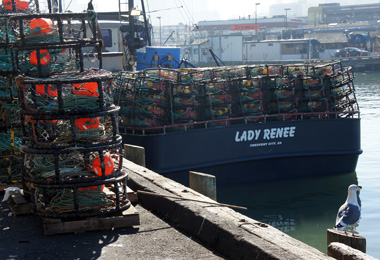
Every November, fishing boats pack together at San Francisco’s Pier 45, where crews stack the decks with row after row of mesh crab traps. This year, a new fishery policy means those stacks are a little smaller.
“Nobody has more than 500 traps now,” says Larry Collins, president of the San Francisco Crab Boat Owners Association. “Some of these guys used to come with 2,000.”
Central California’s crab season is typically fast and furious, in which 80 percent of the haul comes in the first four to six weeks. Previously, boats could carry an unlimited number of crab traps and local fishermen are typically joined by boats from Northern California and Oregon, because crab season opens two weeks later north of Mendocino.
“All those boats up there can kind of double dip,” says Pete Kalvass of the California Department of Fish and Wildlife. “They can go down and fish those two weeks off San Francisco and then head home and catch their own opening date.”
Under the new fishery limits, each boat is allocated 500 crab traps or less, based on its historic catch.

